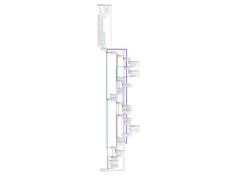Earlier this year, we conducted an in-depth analysis of the Windows Remote Desktop Services. Multiple vulnerabilities were discovered, and all related vulnerabilities (56 cases) have been reported to Microsoft.
Among them were several Preauth RCE vulnerabilities (Unauthenticated non-sandboxed 0-click RCE) in the Remote Desktop Licensing Service.
These vulnerabilities can be used to build multiple Preauth RCE exploitations targeting the Windows Remote Desktop Licensing Service.
Yes, they are 0-click preauth RCE you didn’t see in Windows for years. We call them the Mad, the Bad, and the Dead Licenses vulnerabilities. This article is the first in a series about these vulnerabilities.
In this article, we introduce the vulnerability CVE-2024-38077 (we name it MadLicense【狂躁许可】), and demonstrate its exploitation on Windows Server 2025 which enabled full and new mitigations.
We choose Windows Server 2025 because Microsoft claim Windows Server 2025 delivers next-generation security improvements. And this bug works on Windows Server 2000 to 2025 (all the Windows Server).
We will not give technical explanations in detail now, nor will give a full POC. But the pseudocode here is good enough to learn this vulnerability.
To prevent abusing, the python code here is actually a pseudocode. You can’t even trigger the bug with this pseudocode, let alone exploit it.
It will be enough to prove the severity and also give enough time for defender to act on this before someone really figure out how to exploit it.
We inform Microsft that this bug is exploitable a month ago, but it still marked as exploitation less likely by Microsoft. So we made a responsible disclosures here.
Our aim is to raise awareness of the vulnerability’s risks and to encourage users to update their systems promptly to address these issues. Defender can also use information in this blog to detect and block the possible attack.
Introduction
In July 2024, the following 7 RDP-related vulnerabilities that we reported have been fixed by Microsoft:
CVE-2024-38077: Windows Remote Desktop Licensing Service Remote Code Execution Vulnerability
CVE-2024-38076: Windows Remote Desktop Licensing Service Remote Code Execution Vulnerability
CVE-2024-38074: Windows Remote Desktop Licensing Service Remote Code Execution Vulnerability
CVE-2024-38073: Windows Remote Desktop Licensing Service Denial of Service Vulnerability
CVE-2024-38072: Windows Remote Desktop Licensing Service Denial of Service Vulnerability
CVE-2024-38071: Windows Remote Desktop Licensing Service Denial of Service Vulnerability
CVE-2024-38015: Windows Remote Desktop Gateway (RD Gateway) Denial of Service Vulnerability
Among them, 3 vulnerabilities with a CVSS score of 9.8 for RCE in the Windows Remote Desktop Licensing Service are worth your attention. In Microsoft’s advisory, they considered these vulnerabilities unlikely to be exploited.
However, this is not the case. In fact, we informed Microsoft of the exploitability of these vulnerabilities before the patch was released.
In this blog, we will demonstrate how a preauth RCE exploitation of CVE-2024-38077 on Windows Server 2025 can bypass all modern mitigations to achieve 0-click RCE on the latest Windows Server.
Yes, you heard me right, just by leveraging one vulnerability, you can achieve this without any user interaction.
For more information click here.

















